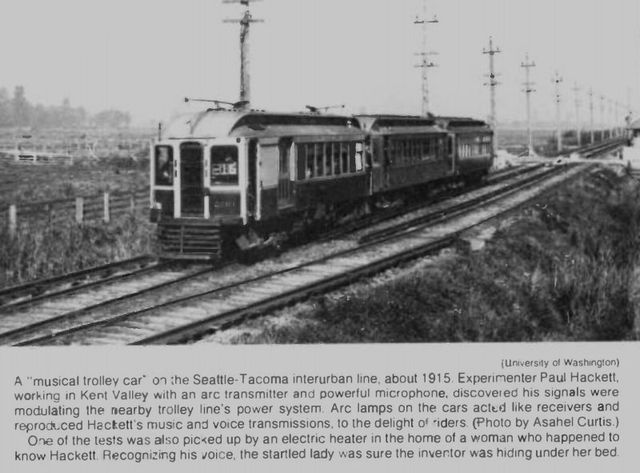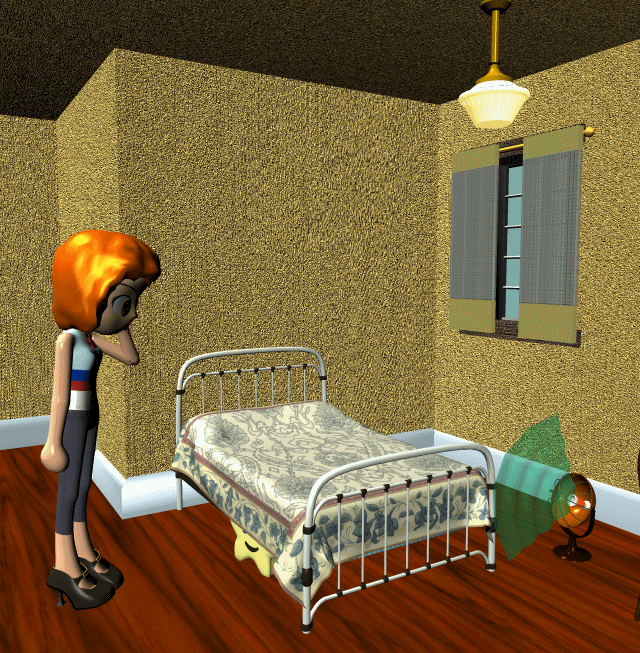Wednesday, December 04, 2019
Speaking arcs in action
Old pre-1900 tech books made vague references to 'speaking arcs'. Before loudspeakers, experimenters were able to use arc lights as sound emitters. In the same way that lightning produces thunder, changing the strength of ionization created a compression wave around the arc. Supposedly a German train station used a 'speaking arc' for a PA system to announce arrivals and departures.
Here's a specific non-vague example, from a modern history of radio in the Seattle area.
 Transcript:
Transcript:
 Electric heaters would have been effective speakers for wired radio, with a resistive coil focused in a parabolic reflector. Magnetostriction.
Note also the Seattle to Tacoma interurban line. Interurbans connected everything, and often ran at 70 MPH. There is a modern light rail system from Seattle to the SeaTac airport, but it's not going to reach Tacoma again until 2030.
Electric heaters would have been effective speakers for wired radio, with a resistive coil focused in a parabolic reflector. Magnetostriction.
Note also the Seattle to Tacoma interurban line. Interurbans connected everything, and often ran at 70 MPH. There is a modern light rail system from Seattle to the SeaTac airport, but it's not going to reach Tacoma again until 2030.
 Transcript:
Transcript:
A "musical trolley car" on the Seattle-Tacoma interurban line, about 1915. Experimenter Paul Hackett, working in Kent Valley with an arc transmitter and powerful microphone, discovered his signals were modulating the nearby trolley line's power system. Arc lamps on the cars acted like receivers and reproduced Hackett's music and voice transmissions, to the delight of riders. One of the tests was also picked up by an electric heater in the home of a woman who happened to know Hackett. Recognizing his voice, the startled lady was sure the inventor was hiding under her bed.Bear in mind that Morse was common in 1915, but voice transmissions were unfamiliar until about 1922.
 Electric heaters would have been effective speakers for wired radio, with a resistive coil focused in a parabolic reflector. Magnetostriction.
Note also the Seattle to Tacoma interurban line. Interurbans connected everything, and often ran at 70 MPH. There is a modern light rail system from Seattle to the SeaTac airport, but it's not going to reach Tacoma again until 2030.
Electric heaters would have been effective speakers for wired radio, with a resistive coil focused in a parabolic reflector. Magnetostriction.
Note also the Seattle to Tacoma interurban line. Interurbans connected everything, and often ran at 70 MPH. There is a modern light rail system from Seattle to the SeaTac airport, but it's not going to reach Tacoma again until 2030.Labels: 1901, Entertainment
